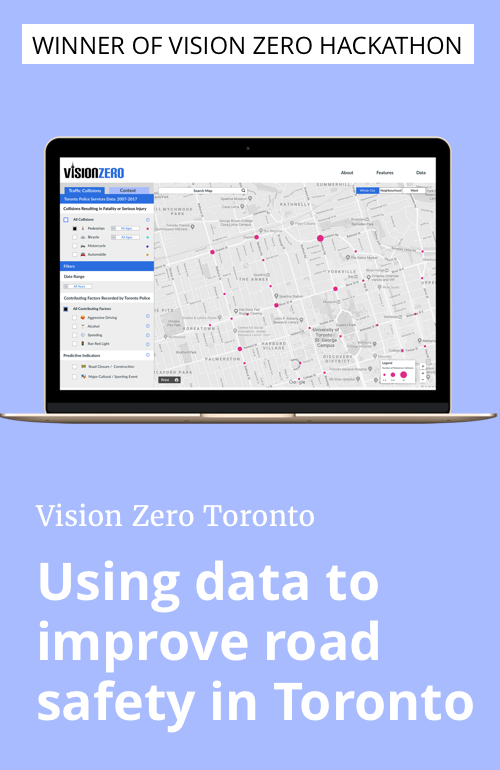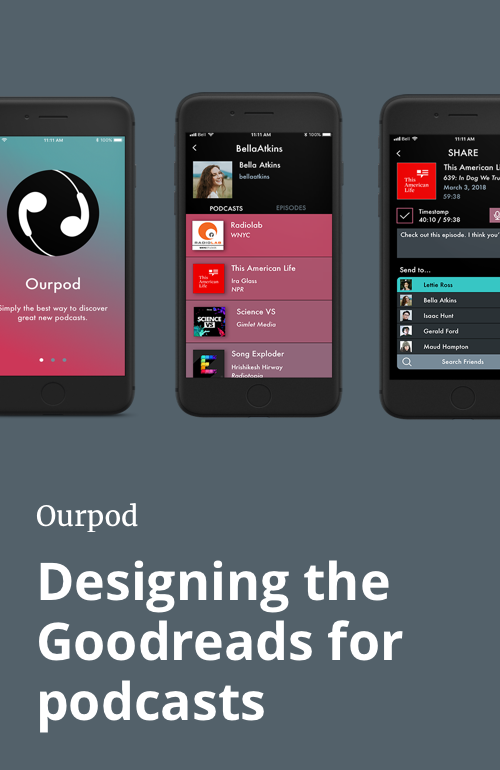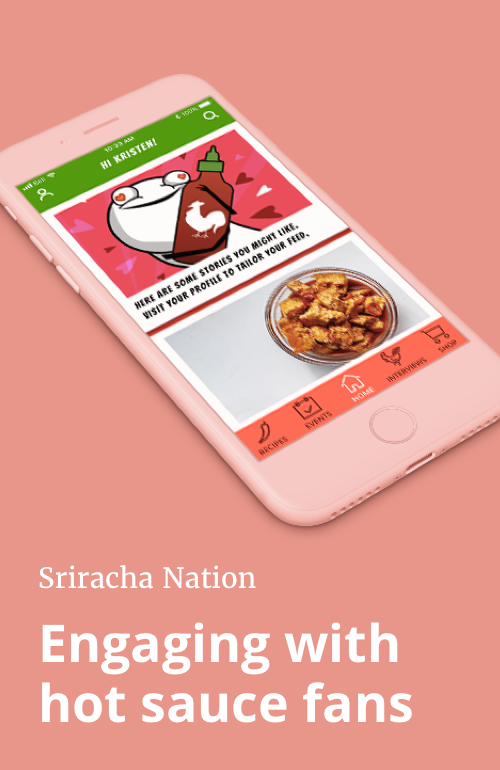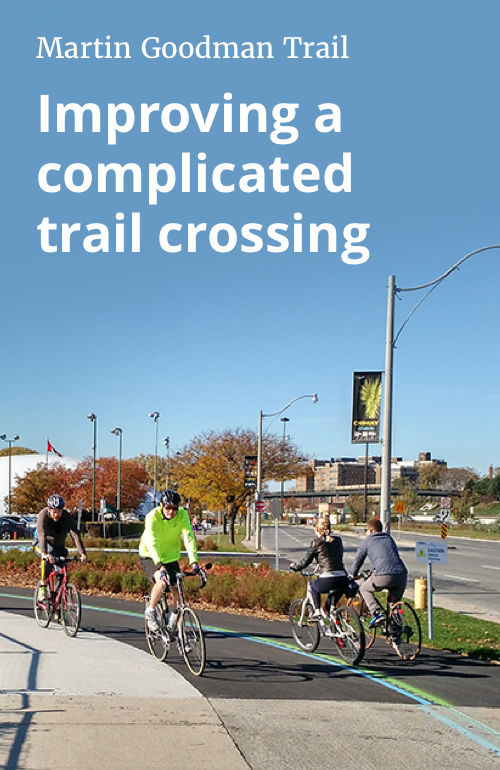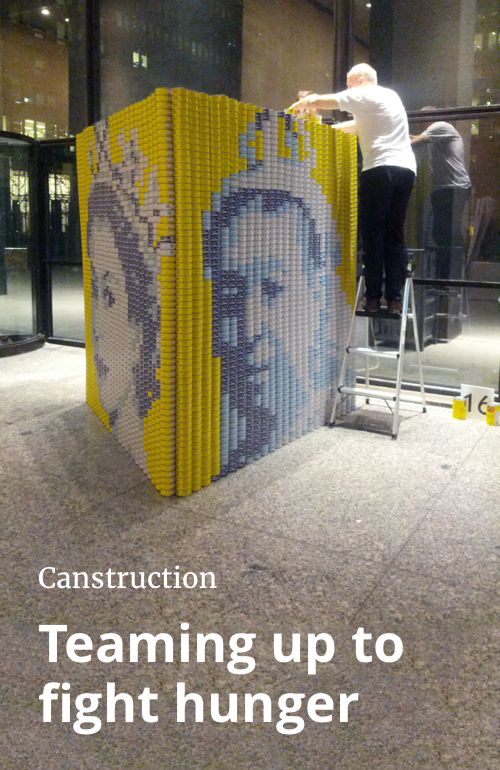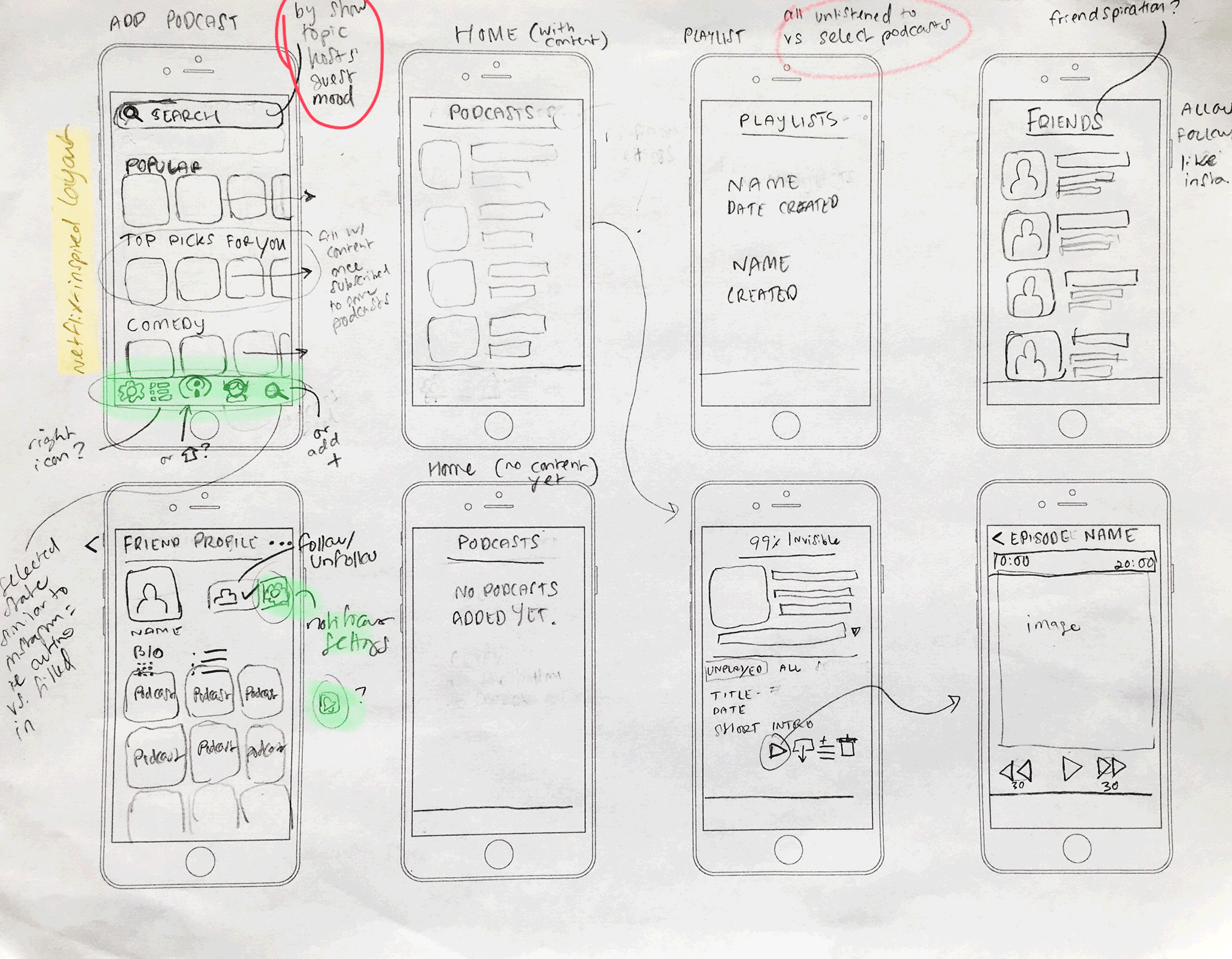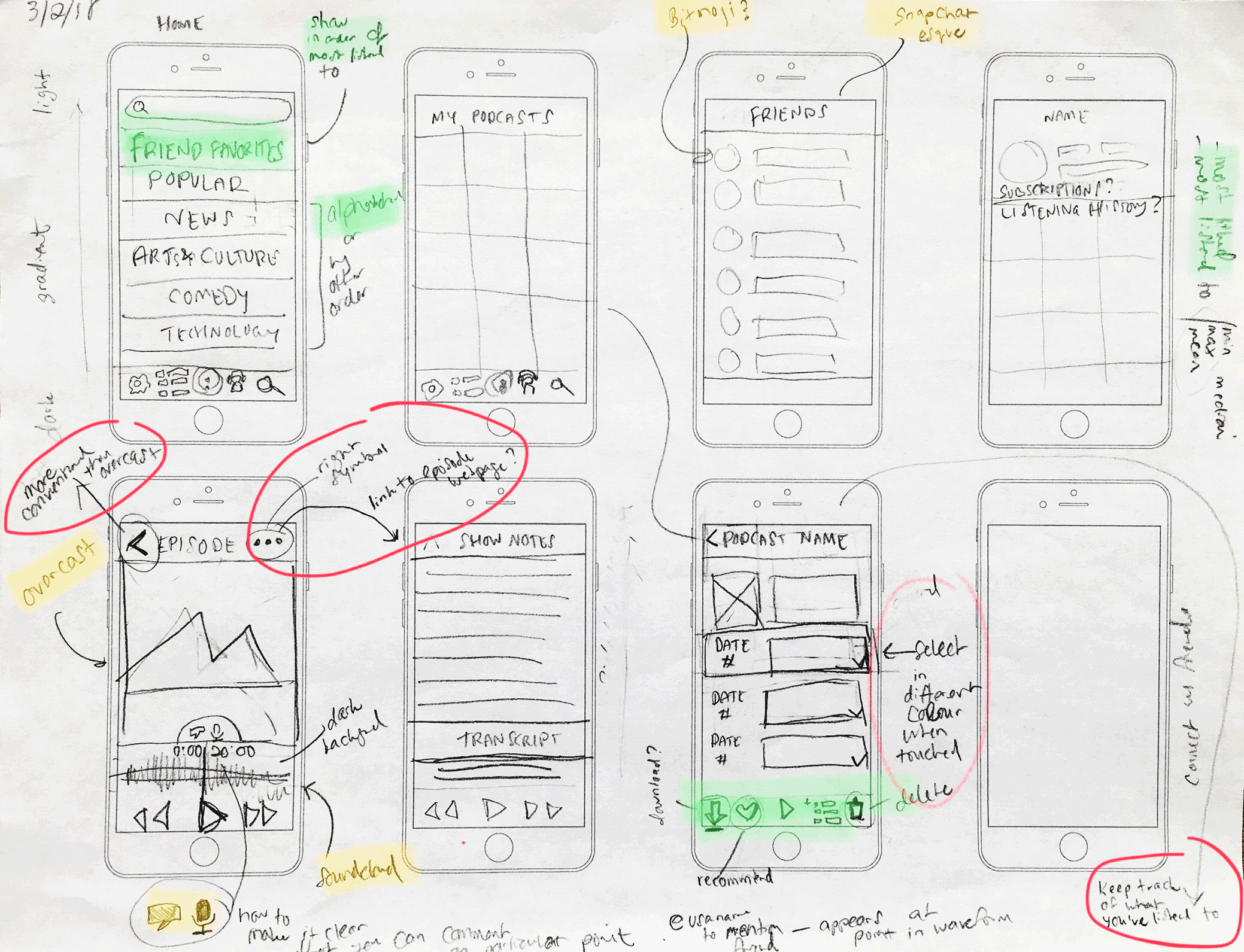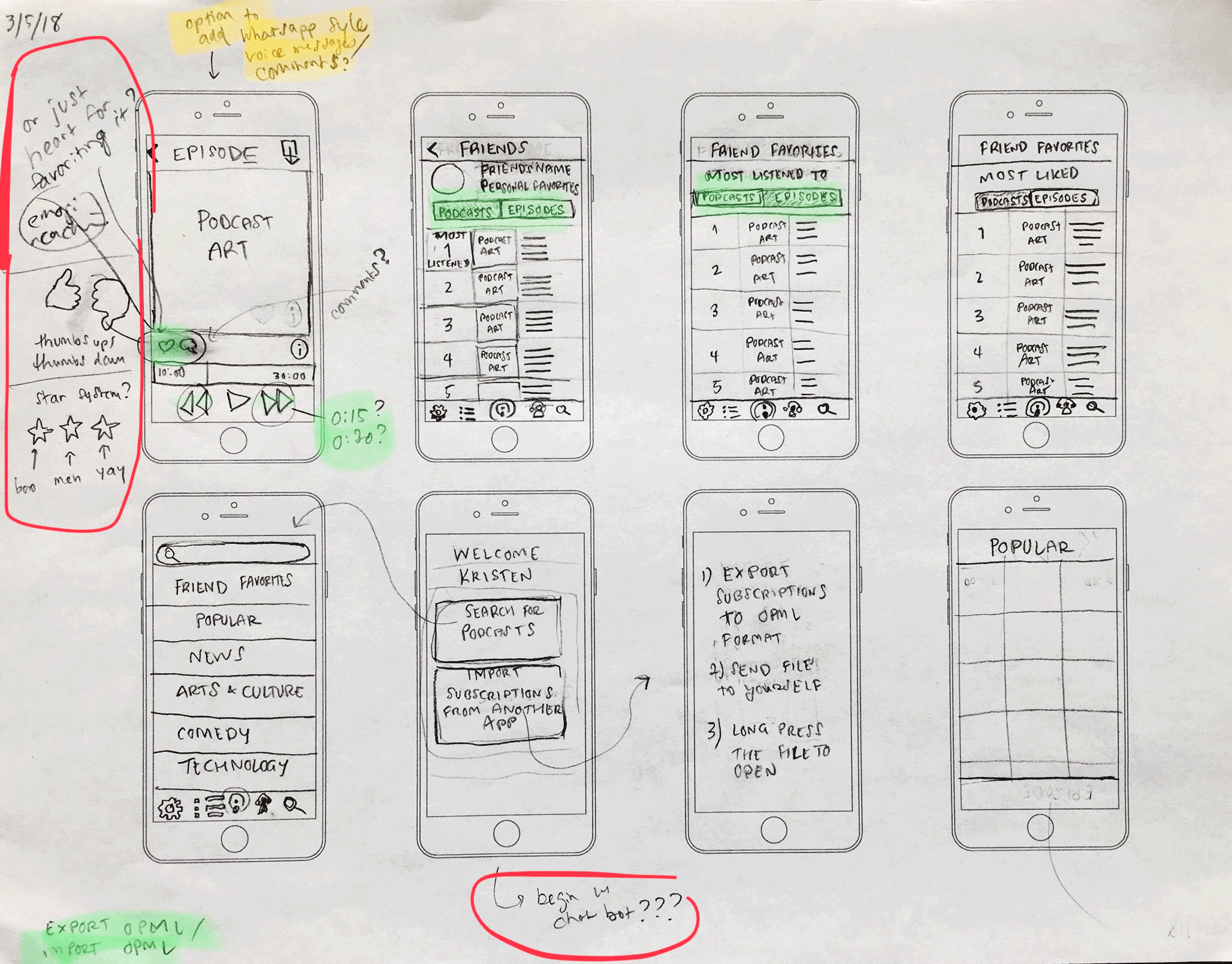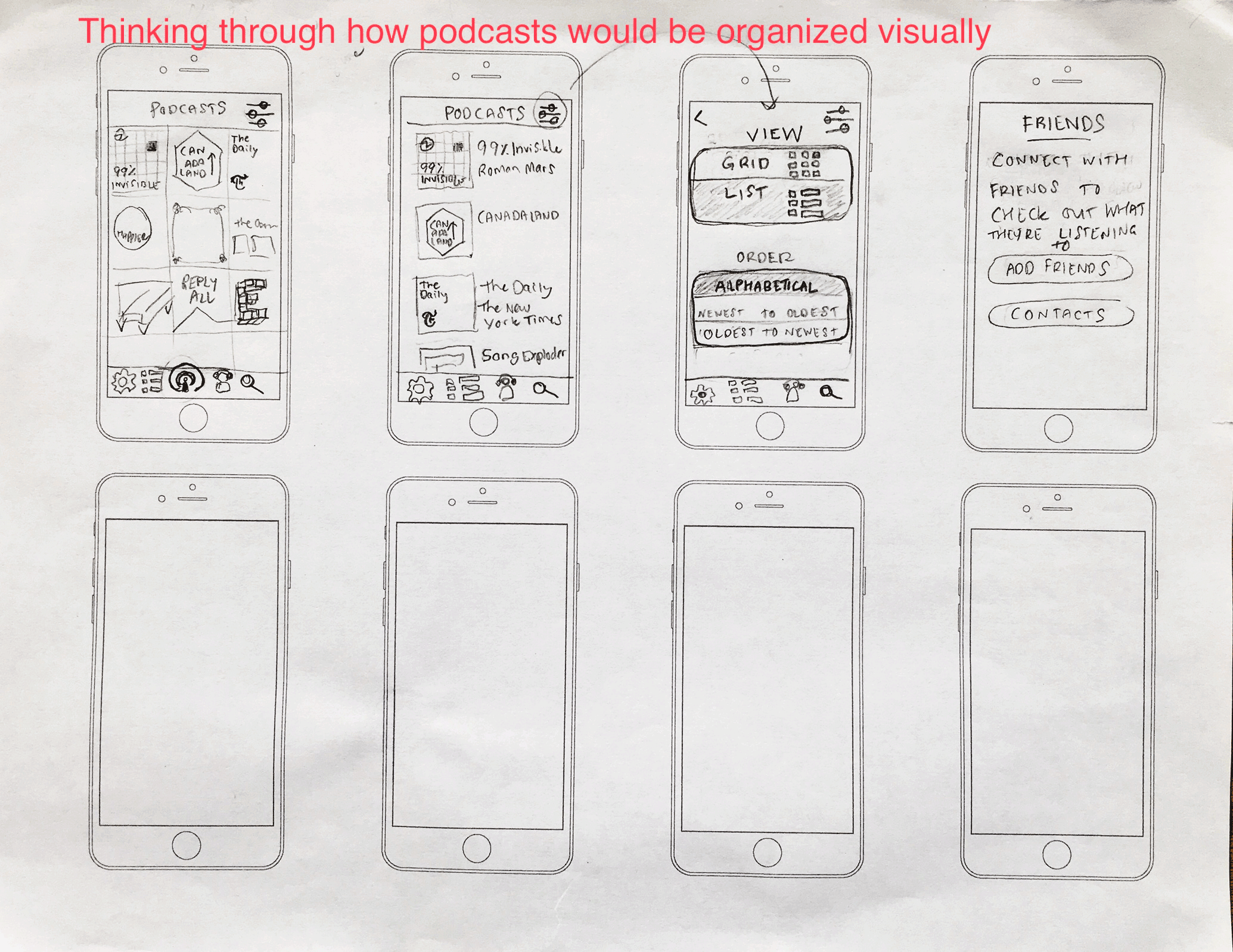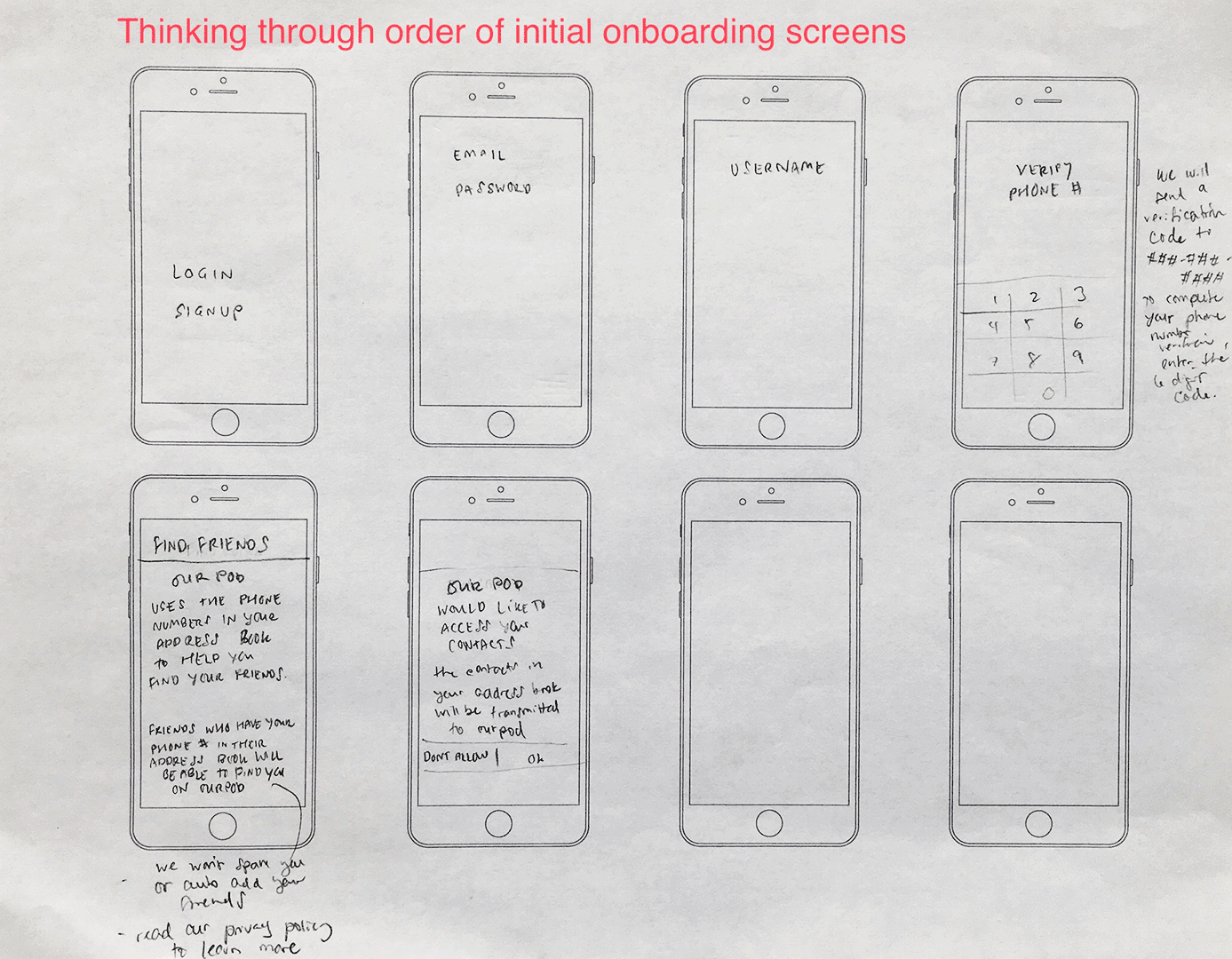Ourpod
A self-initiated project to develop a podcast discovery and sharing app
Need some help finding your new favourite podcast? With a unique social listening experience and recommendations based on your interests, Ourpod makes it easy to discover and share great new podcasts.

Objective: Address issue of podcast discoverability
Deliverable: High fidelity prototype of a mobile app
Timeline: 5 weeks
Role: Product strategy, user research, product design, branding, copywriting
PROBLEM
As of February 2018, there were more than 500,000 active podcasts on iTunes, but the process of finding a new favourite can be hard, particularly for new podcast listeners. Podcasts producers don't exactly put ads in subway cars, on billboards, in magazines, or on TV. How do you know where to start?
From my user research, I learned that podcast listeners rely on word of mouth recommendations from friends, family, and their favourite podcast hosts. This process is slow and tedious. What do you do if you can't figure out the spelling? Or, forget the name of that show your friend says she is obsessed with?

RESEARCH
Before getting into user research I wanted to find out what was already known about podcast listeners so that I could tailor my user interview questions accordingly.
I found that a significant amount of study has been done on this topic by marketing and demographic research firms. From my research I learned that podcast listeners are:
• Well educated - most have at least a university degree
• Well off - presumably their high educational attainment correlates with high paying jobs
• Somewhat more male than female
• Subscribe to an average of 6 podcasts
• Range in age from mid-20s to mid-50s
I also found that podcast discoverability is a well-established issue that has been discussed extensively online. Through my competitive analysis, I discovered a number of different strategies that have been tried to address it.
COMPETITIVE ANALYSIS
I undertook a competitive analysis to identify key competitors and evaluate their strengths and weaknesses. Specifically, I used it as a lens to evaluate different content discovery tactics and social functionality.
DISCOVERY

Stitcher does the best job of helping users to find new content. There are show recommendations based on what you listen to, “Sticher’s Picks” and a “Popular” section.
Apple Podcasts is definitely the leader in the podcast app category. In terms of podcast discovery, its “Browse” section includes “Featured” content and a listing of top episodes and podcasts in the “Top Charts.”
Podyssey (Formerly Echo) is purely a review app that bills itself as the “Goodreads for podcasts.” It lets users share favourite podcasts and episodes irrespective of what podcast player they use.
Pocket Casts is a premium product and is consistently rated among the top podcast apps. In terms of podcast discoverability, its “Discover” section includes “Trending” and “Most Popular” podcasts including a listing of them by category.
Netflix does a great job of introducing users to new content that they might like based on what they’ve previously watched.
SOCIAL CONNECTION

Snapchat has a simple onboarding process that quickly connects users with close friends and family found in their address book.
Whatsapp also connects users to their closest friends and family using the contacts in their address books. It also allows users to record and send audio messages to one another.
Overcast is well regarded for its simplicity and clean layout. Users can add recommendations from Twitter and also browse their "most recommended" podcasts.
Stitcher also connects to Facebook where it can post on your behalf, telling your friends what you’re listening to, and what you liked.
Podyssey (Formerly Echo) ties into Facebook and Twitter to share podcast reviews and recommendations.
USER INTERVIEWS
In order to better understand the problem and know which features to develop, I recruited six friends and family members who listen to podcasts for informal ethnographic interviews.
Participants ranged in age from early 20s to late 30s. Five of the six interviews were conducted in person, and one on the phone.
I recorded the interviews using an app called Just Press Record that generates automatic transcriptions. I had hoped this would save me from transcribing each of my conversations, but the app wasn't accurate enough under the conditions in which I recorded (background noise, echoey rooms, other people speaking in the background). But, it was worth it to try it out and I'm hopeful I'll have better luck with it under more optimal recording conditions.
QUESTIONS
Building upon my research, I developed the following questions to better understand how people listen to and learn about new podcasts:
• How do you listen to podcasts? How did you choose that particular platform or app?
• What do you like about it? What do you think could be improved?
• What are some of the podcasts you listen to? How did you find out about them?
• When you’re looking for something new to listen to, where do you go or who do you ask?
• Can you walk me through the process of subscribing to a new podcast on the platform you use?
• If you what to tell a friend about a particular podcast series or episode, how do you do it?
INTERVIEW FINDINGS
Do you remember the first album you bought or the first concert you attended? I certainly do -- It's a powerful memory for a lot of people. Many people told me similarly vivid stories about the first podcast they listened to -- when it was, where they heard it, and who told them about it. It made me realize what a strong emotional attachment people have to podcasts.
When I asked about what podcast app or platform my interviewees use to listen to podcasts I was expecting to hear a range of different answers, but I was surprised to learn that nearly everyone I spoke with used the default podcast app on iPhone. I was even more surprised to hear how much they disliked it. From their responses, I realized how hard it is for other podcasts apps to gain traction and differentiate themselves from the default that already exists on people's phones.
I also surprised to learn that my interviewees overwhelmingly get their podcast recommendations from friends, family, and hosts of podcasts they know and love. Maybe it shouldn't be surprising because this is exactly the same way I learn about new podcasts, but with so many podcast apps connecting to Twitter and Facebook to share recommendations and reviews, I expected one or two people to mention social media as a source of podcast recommendations. Instead, I heard about Whatsapp chats, downloaded episodes passed along from family members, and in-person conversations with close friends.
Asking users about how they go about subscribing to a new show and listening to episodes proved to be a particularly fruitful question. Becuase so many people mentioned that they use and strongly dislike the default iPhone podcast app it helped me to understand exactly what they didn't like about it. Interviewees pointed out examples of confusing language and buggy operation. One even mentioned that he hasn't updated the operating system on his iphone in three years just so he could keep the old version of the app!
ANALYSIS
JOBS TO BE DONE
Understanding that customers hire products to get particular jobs done, I used my interview findings to put together job stories.
When I am looking for a new podcast to listen to I want to get recommendations….
… and based on what other podcasts I already listen to, and
… from people that know me well,
… so that I can find content that is tailored to my particular interests.
PERSONAS
My interviewees ranged from avid podcast listeners to people who are brand new to the medium. Understanding this range of podcast listener, combined with the job stories, I created two main personas:
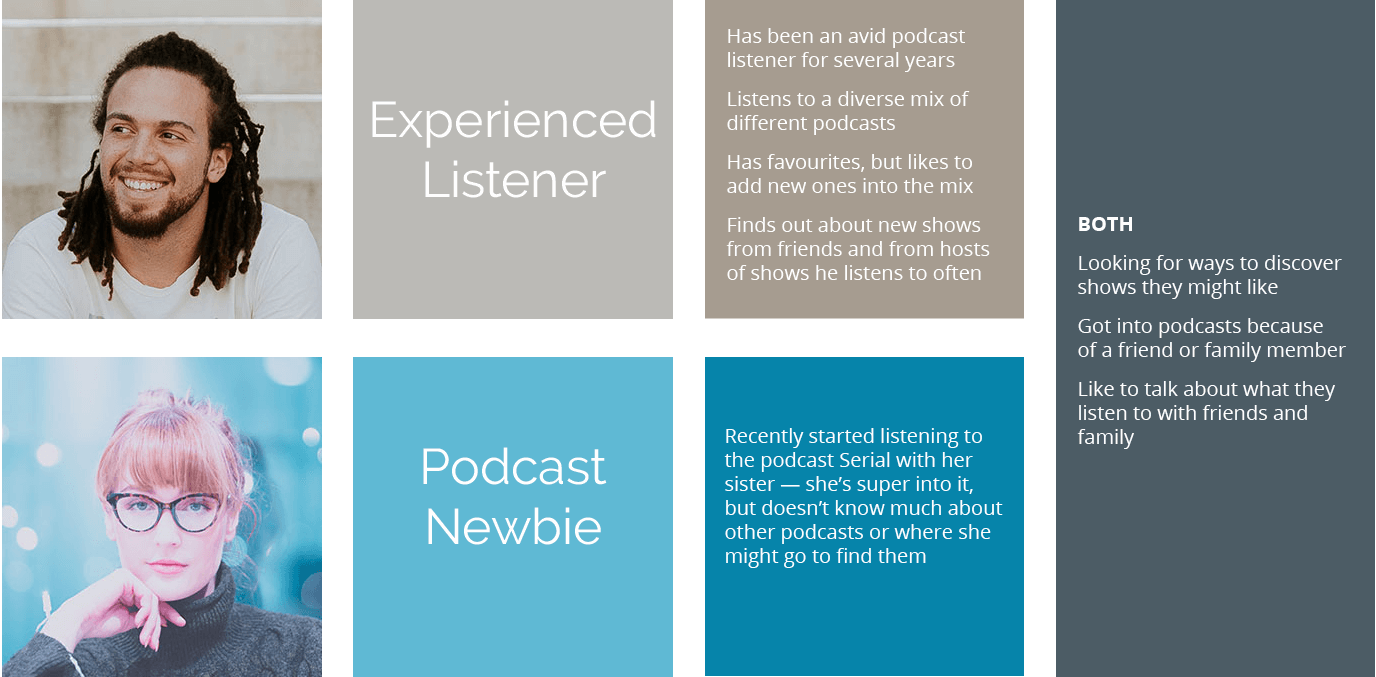
DESIGN
USER FLOW
I created a user flow as the first step in starting to envision the overall architecture of the app.

SKETCHING
Before going into wireframing in Sketch, I worked out many of the app details on paper first.
The image gallery below shows my sketching process. Sketching was useful to figure out what the main screens would be, how they would behave (circled in red), what the icons would look like, (highlighted in green) and also think through how I wanted the app to be influenced by other existing products (highlighted in yellow).
I bounced back and forth from sketching to researching how other apps were handling similar challenges, whether it was finding and connecting with friends, displaying relevant content, or being able to comment on or rate items.
USER JOURNEY MAP
I created user journey map to think about the app more holistically from end to end -- from finding out about the app and downloading it to continuing to use it. I used it to find out what screens and functions might be missing.

Some important findings:
• How do users find the app and how do you persuade them to switch? This was a particularly important consideration because what I learned in my interviews is that most people just use the default podcast app on their phone. In order for this app to be successful, I hypothesized that it would need to be adopted organically, though friends and family.
• Add the first podcast - Although I had created two personas I hadn't thought that much about what their individual experience might be in the app when I went into sketching. This got me to think more about the experience of the "Podcast Newbie" and how the app could best serve this type of user.
• How do you keep users engaged and keep them coming back? Thinking about this helped me to develop ideas around the messaging functionality and personalized notifications, such as letting users know when a friend has just started listening to a podcast that they listen to.
NAMING
The name Ourpod is intended to convey “social listening experience” in a way that is unique and fits within the ecosystem of other familiar media platform names, such as “Netflix,” “iTunes,” “Mynoise,” and “Overcast.”
I ultimately chose Ourpod because it was simple, communicated the idea of the app, was easy to say and spell, wasn’t already in use, and didn’t have any associations with other brands.
I came up with it through a lengthy naming process involving free association, etymological research, and exploration of words starting in or ending in “pod” or “cast.” Incorporating "pod" or "cast" proved challenging because they are such common prefix and suffixes across existing products, but I persisted because I wanted the name to clearly convey that this is a podcast app.
LOGO DESIGN
The logo was designed to convey “social” and “audio.” The shape and orientation of the earbuds are meant to have a dual meaning of quotation marks to convey how the app would be used to both listen to podcasts as well as to interact with friends.
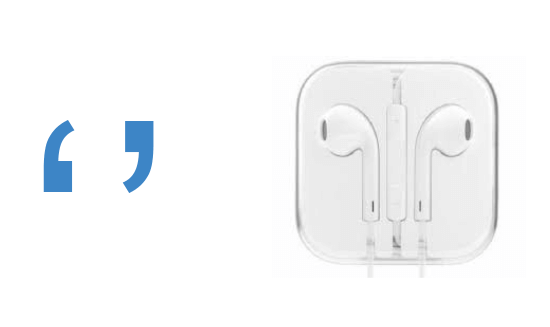
MOOD BOARD
I created a mood board to solidify my thoughts around the brand. The podcast app is different than anything else that exists in the market, so I wanted it to look the part. I wanted it to be vibrantly coloured with aspects of minimalist design, and sleek, crisp typography. Inspirations included geometric typography, colour field paintings, and op art.
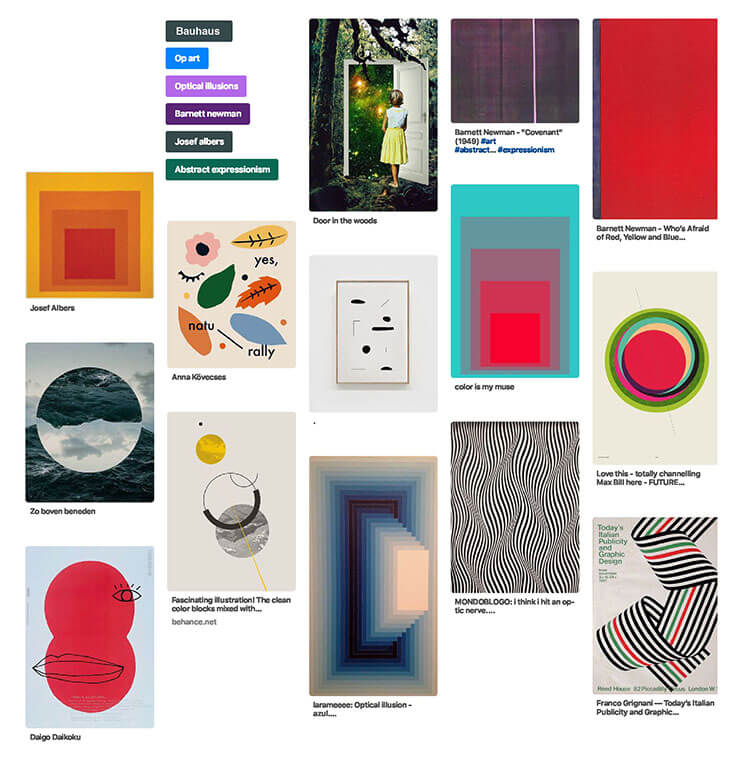
STYLE TILE
Building upon the mood board, I created a style tile to visualize potential colours, imagery, and typography.
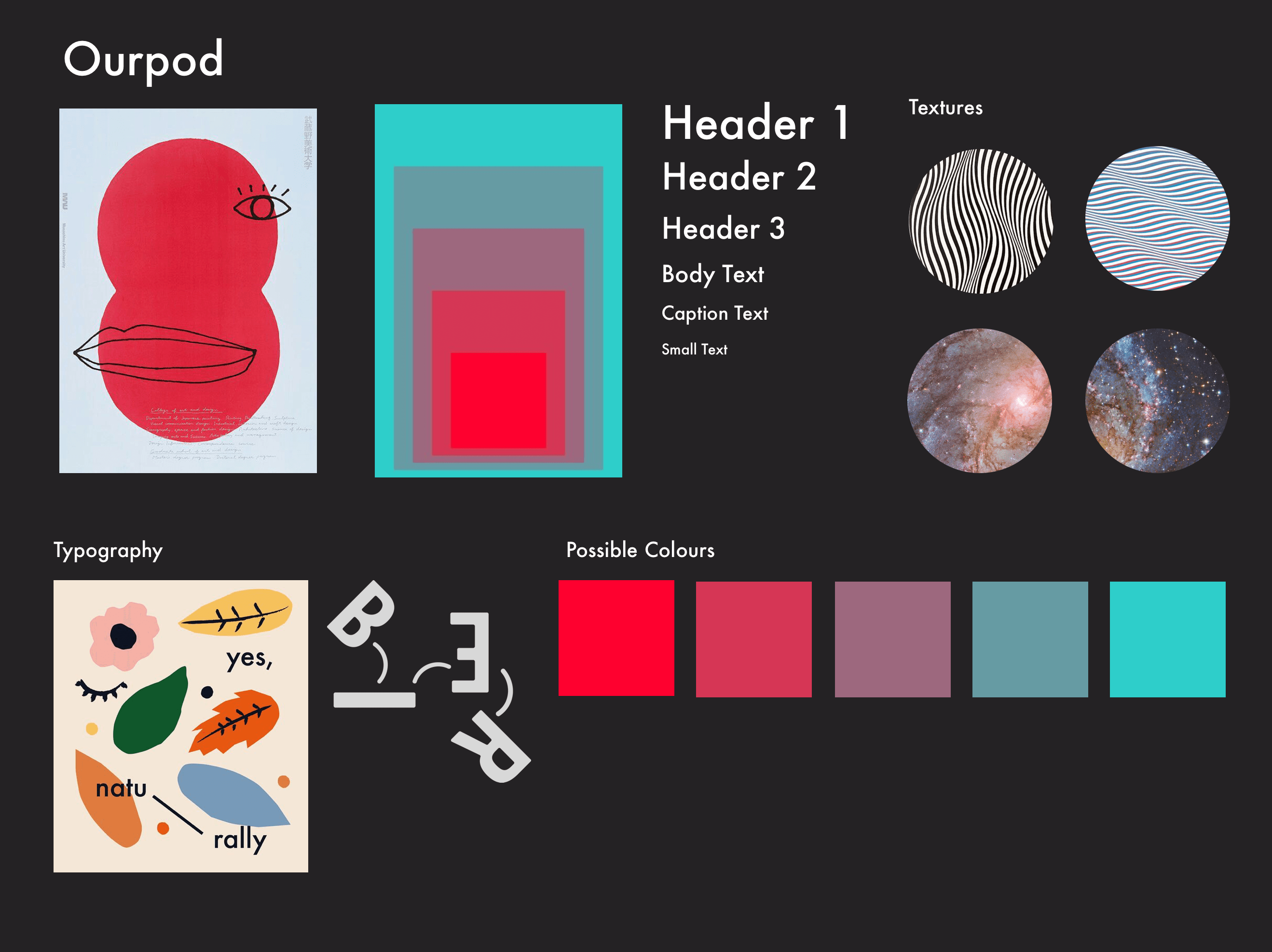
ITERATIVE DESIGN
The images below show the progression of key app screens from initial wireframes to their final high fidelity versions.
Towards the end of the design process, I used a macOS app called Contrast to check the accessibility of the design. Initially, the design didn't meet the Web Content Accessibility Guidelines (WCAG). But, I was able to make some relatively minor adjustments to the size of the type and background colours to bring the contrast up to guideline's standards. This was a relief and an important lesson to test the contrast before getting too attached to a particular colour scheme or type size.
USER TESTING
Throughout the design process, I user tested the app screens on my iPhone using Sketch Mirror and I did several rounds or A/B testing using Usability Hub.
But, I left off prototyping in InVision until the very end. Leaving it for last meant that I didn't realize until the very last minute that I was missing some screens and had to quickly create them.
FUTURE FUNCTIONALITY
There wasn't enough time to incorporate every possible feature into the final prototype. For future versions I'd like to explore the following:
• Ability to follow podcast hosts to see what they recommend
• Social notifications such as when a friend starts listening to a podcast you have in common
More Projects

